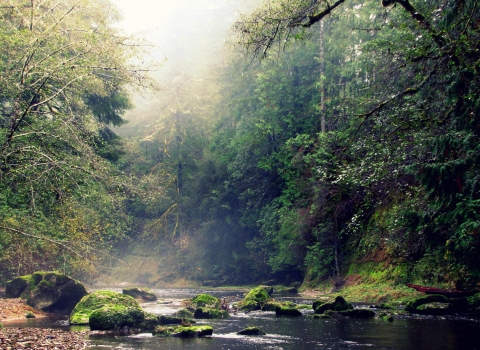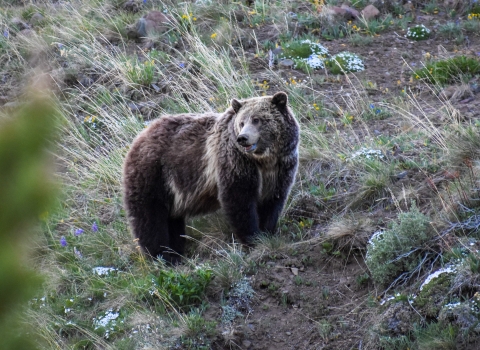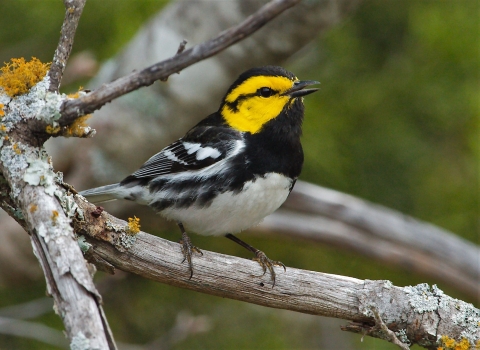AMARGOSA VALLEY, Nevada – Agency biologists are excited to report increased numbers of one of the world’s rarest fishes. Scientists counted 263 Devils Hole pupfish, which is the most they’ve observed in 19 years.
This count came on the heels of a magnitude 7.6 earthquake in Mexico that caused 4-foot waves in Devils Hole on Sept 19, 2022. Pupfish are counted using both scuba and surface visual counters. Sloshing waves removed algae, invertebrates, and other organic matter from a shallow shelf that pupfish use to forage and spawn. This made it easier for biologists to see and count pupfish from the surface. Scientists using scuba also counted pupfish at greater depths.
Devils Hole pupfish (Cyprinodon diabolis) live in the upper 80 feet of a deep water-filled cavern and sun-lit shallow shelf at the cavern’s entrance, making this the smallest range of any vertebrate species on the planet. Devils Hole is a detached unit of Death Valley National Park adjacent to Ash Meadows National Wildlife Refuge in Nye County, Nevada. U.S. Fish and Wildlife Service, Nevada Department of Wildlife, and National Park Service staff cooperate to manage this critically endangered species.
Population size is estimated by counting fish throughout its habitat, with standard counting protocols. Scientists scuba dive to count fish in the cavern, starting at depths below 100 feet. Simultaneously, other scientists count fish on the shallow shelf at the waters’ surface. The final count includes both surface and underwater fish. The official result, 263 observable pupfish, is the highest autumn count recorded since September 2003.
Before the 1990s, the population was around 400-500 pupfish in the fall. However, pupfish numbers have been especially low during the last two decades, averaging only 90 fish.
A return to higher numbers of pupfish this time of year could signal important changes in the ecosystem. Kevin Wilson, Aquatic Ecologist for Death Valley National Park, manages resources of Devils Hole, and states “recent high spring and fall counts show the importance of maintaining long-term data as we work to find out what’s changed.”
Brandon Senger, Supervising Fisheries Biologist for the Nevada Department of Wildlife, has been conducting scuba -counts at Devils Hole since 2014 and noted "I have never seen the population this robust before. Fish of all size-classes were abundant. We SCUBA-counted more fish on one level than we have in total in previous counts."
Other biologists on-site noted fish appeared in remarkable condition and were very active. Many courting and spawning pairs of pupfish were seen during the count. Jennifer Gumm, who manages the Ash Meadows Fish Conservation Facility for the U.S. Fish and Wildlife Service states “earthquake induced spawning is a fascinating aspect of the behavior of this species.”
Having more pupfish in Devils Hole also affects the direction and focus of species recovery. This week’s count continues an overall fall increase over the last nine years from the all-time low of 35 fish. Michael Schwemm, Senior Fish Biologist for the US Fish and Wildlife Service, states “it’s exciting to see the numbers gradually increasing over recent years. The ongoing trend, especial in this highly variable population, makes clear that habitat conditions have changed in a good way since the lowest counts, and we’re excited about the future directions for research and recovery.” The next pupfish count occurs in spring 2023.
Contact: NPS: Kevin Wilson, 775-537-0787 x207
Contact: USFWS: Jennifer Gumm, 702-308-2732
Contact: NDOW: Brandon Senger, 702-668-3999



